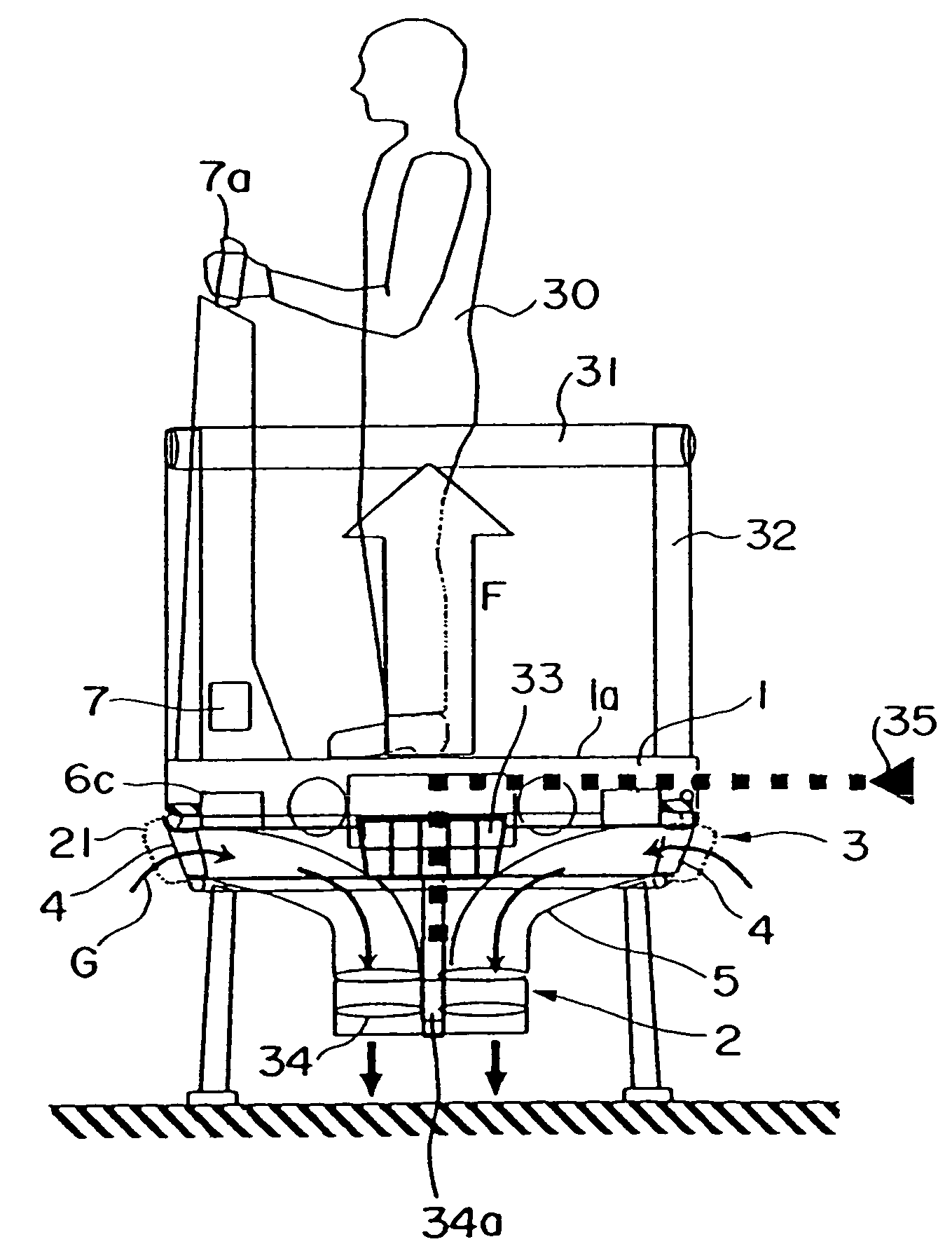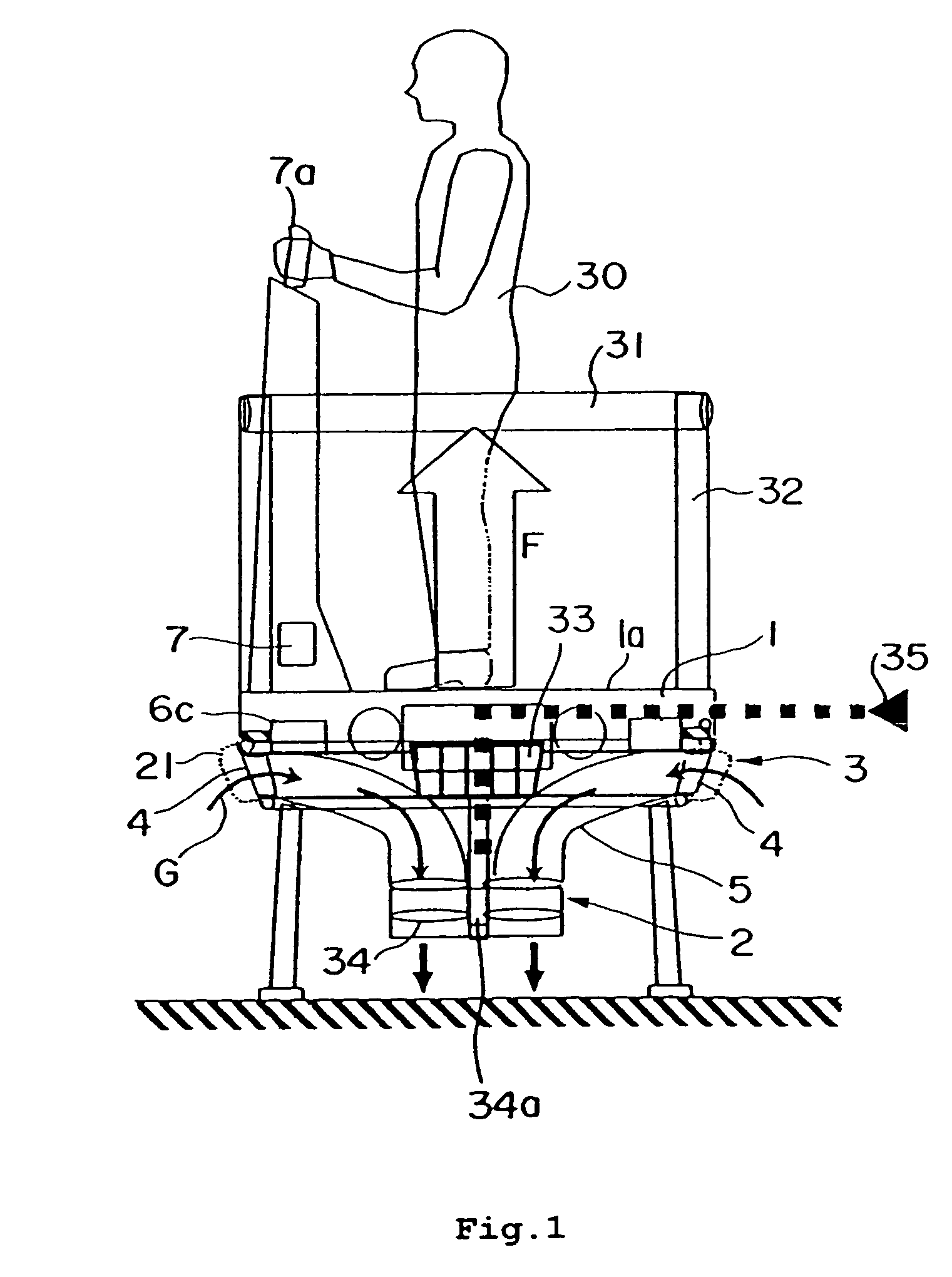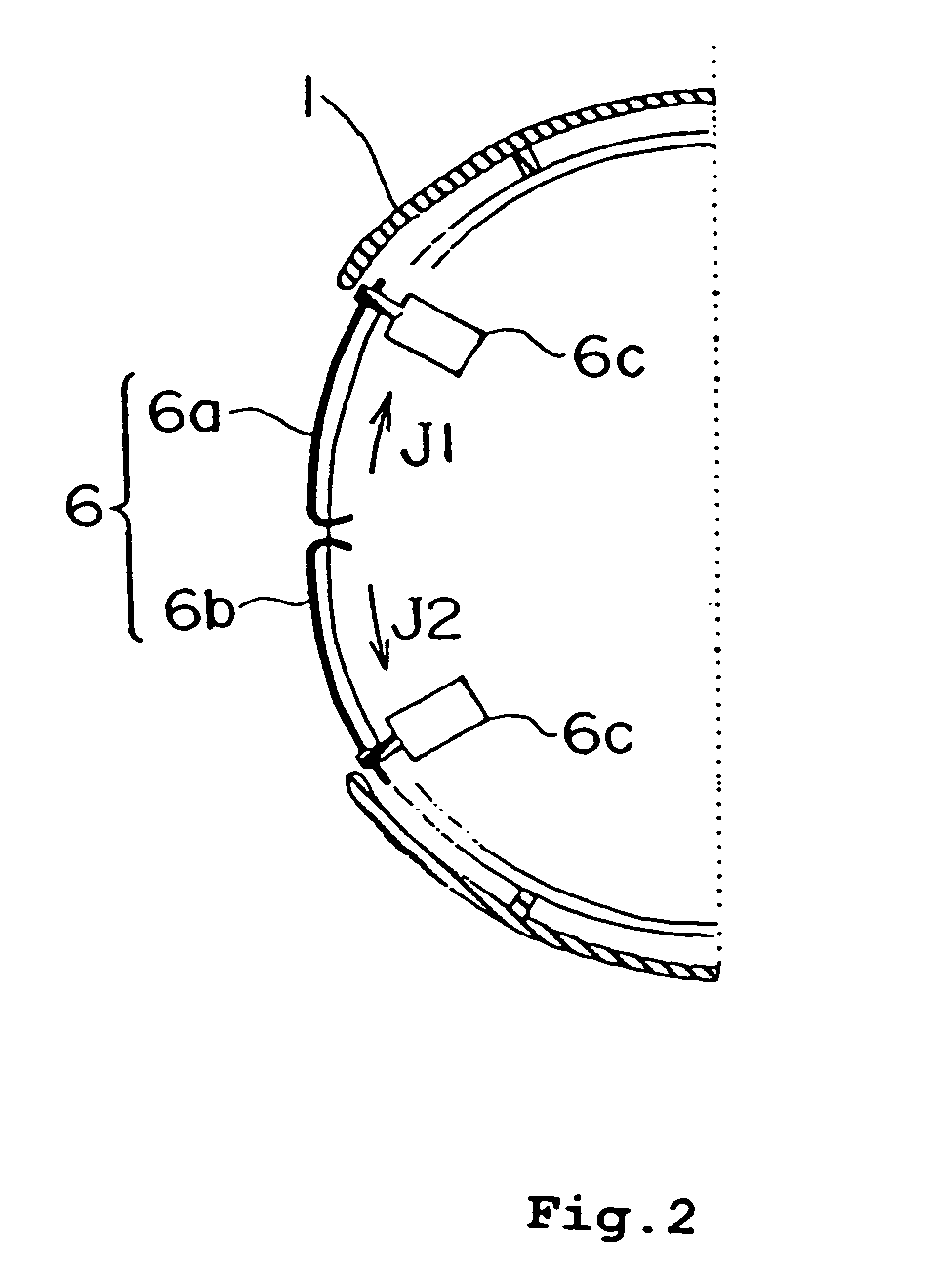Vertical takeoff and landing apparatus
a vertical takeoff and landing apparatus technology, applied in vertical landing/take-off aircraft, aircraft navigation control, transportation and packaging, etc., can solve the problems of inability to take effective countermeasures or minute counteractive actions, the flight posture or attitude of the pilot collapses or changes, and the pilot's body or weight is extremely low in response, so as to eliminate any fear of defective or poor fuel supply, excellent maneuverability and postural stability of the airfram
- Summary
- Abstract
- Description
- Claims
- Application Information
AI Technical Summary
Benefits of technology
Problems solved by technology
Method used
Image
Examples
embodiment 1
[0087]First, a vertical takeoff and landing apparatus according to a first embodiment of the present invention will be described while referring to FIG. 1 through FIG. 15.
[0088]This vertical takeoff and landing apparatus is suitable for use with one person, and has its body or airframe 1 formed into substantially a disk-shaped configuration. The airframe 1 has an upper surface 1a in the form of a flat surface, on which an operator or pilot 30 can stand for controlling the apparatus. A plurality of poles 32 are arranged upright on the upper surface 1a of the airframe 1, with a guard ring 31 of an annular shape being mounted on a tip end of each pole 32. This guard ring 31 is provided for protecting the pilot 30 and preventing him from falling off from the airframe 1.
[0089]A propulsion device 2 for generating propulsive force F in a vertically upward direction is arranged in the center of and the inside of the airframe 1. This propulsion device 2 can be adopted either of an externally...
embodiment 2
[0104]A second embodiment of the present invention will be described while referring to FIG. 16 through FIG. 28. In these figures, the same or corresponding parts of this embodiment as those of the first embodiment are identified by the same symbols while omitting an explanation thereof.
[0105]In this embodiment, a plate 8 of a wing or airfoil cross section is provided at each section of the air intake port 4 instead of each shutter part 6. An asymmetrical wing or airfoil of the Clark Y type or the like is suitable for each plate 8, which is provided at its both ends with a pair of support members 9 which are pivotally or rotatably supported on the both side walls of a corresponding section of the air intake port 4 so as to support this plate 8 at an arbitrary angle of attack. That is, each support member 9 is a universal pivot, and the plates 8 are arranged in such a manner that the angle of attack and the angle of tilt or inclination of each plate 8 can be individually changed by t...
embodiment 3
[0111]A third embodiment of the present invention will be described while referring to FIG. 29 through FIG. 33. In these figures, the same or corresponding parts of this embodiment as those of the above-mentioned first and second embodiments are identified by the same symbols while omitting an explanation thereof.
[0112]This embodiment relates to a structure to protect the pilot 30, and includes airbags 12, 12a, 15 attached to an outer side of the guard ring 31, the outside surface of the airframe 1, and tip ends of a plurality of legs 40 mounted on a lower surface of the airframe 1, respectively.
[0113]An annular storage member 11 arranged to surround the pilot 30 is mounted to the outer side of the guard ring 31. This storage member 11 comprises a cover of a semi-circular cross section for receiving therein the airbag 12, as shown in FIG. 31 and FIG. 33. FIG. 30 and FIG. 31 illustrate the state of the airbag 12 being received therein, i.e., being not expanded, whereas FIG. 32 and FI...
PUM
 Login to View More
Login to View More Abstract
Description
Claims
Application Information
 Login to View More
Login to View More - R&D
- Intellectual Property
- Life Sciences
- Materials
- Tech Scout
- Unparalleled Data Quality
- Higher Quality Content
- 60% Fewer Hallucinations
Browse by: Latest US Patents, China's latest patents, Technical Efficacy Thesaurus, Application Domain, Technology Topic, Popular Technical Reports.
© 2025 PatSnap. All rights reserved.Legal|Privacy policy|Modern Slavery Act Transparency Statement|Sitemap|About US| Contact US: help@patsnap.com



